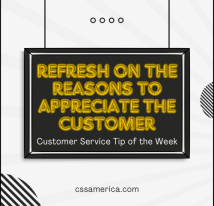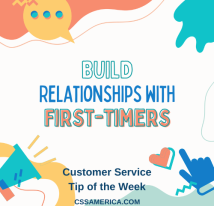I’ve read stories recently of account representatives on professional sports teams being laid off. On one team, it was because the team sold so many seats, they didn’t need sales representatives. On another team, it was because the team performed so poorly on the field, that attendance was down, and the team needed to cut costs – so they let go of fan relations staff.
Our company is very focused on getting clients to deal with the root cause of problems. So let me try to understand this from a root cause perspective. If your product is really exciting, you don’t need sales staff. And if your product is terrible, you don’t need customer service staff. Are those the conclusions I should draw?
Any organization wanting to be GREAT needs to realize that customers form opinions of businesses – any business – based on 3 key attributes: 1) The Employee Attitudes, Skills, and Knowledge. 2) The Processes that the Customers Experience. 3) The Product or Service Itself.
To take out the first (and some portion of the second) of those three key attributes is short-sighted. It says if our product is exciting, we don’t need staff to sell. If our sales are down because of disappointment with the product, we don’t need staff to try to maintain those customer relationships.
When your organization has a new hot product or – conversely – has a bad product, don’t take it out on your sales and service staff.
They’re the ones who interact with your customers. They’re the ones that maintain relationships (and retention) through the tough times. They’re the ones who strive to build relationships when your product is great, so the customer loyalty remains even if the product quality drops.
Make sure you understand the true long-term value of sales and service staff.
Read our New Book – “Ask Yourself…Am I GREAT at Customer Service?” http://www.amigreatat.com/
Interested in improving your company’s customer service? See more at our new website! http://www.cssamerica.com/





















